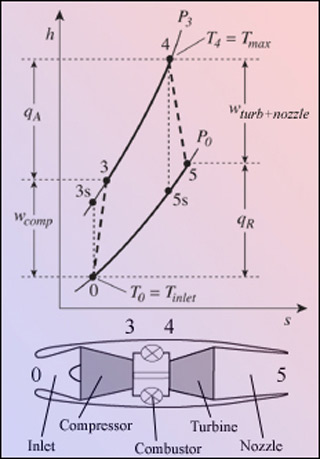Course Description
This course is taught in four main parts. The first is a review of fundamental thermodynamic concepts (e.g. energy exchange in propulsion and power processes), and is followed by the second law (e.g. reversibility and irreversibility, lost work). Next are applications of thermodynamics to engineering systems (e.g. …
This course is taught in four main parts. The first is a review of fundamental thermodynamic concepts (e.g. energy exchange in propulsion and power processes), and is followed by the second law (e.g. reversibility and irreversibility, lost work). Next are applications of thermodynamics to engineering systems (e.g. propulsion and power cycles, thermo chemistry), and the course concludes with fundamentals of heat transfer (e.g. heat exchange in aerospace devices).
Course Info
Instructor
Departments
Learning Resource Types
assignment
Problem Sets
grading
Exams
notes
Lecture Notes

An h-s diagram of a non-ideal Brayton cycle and a simplified gas turbine schematic. (Image courtesy of MIT OpenCourseWare.)










